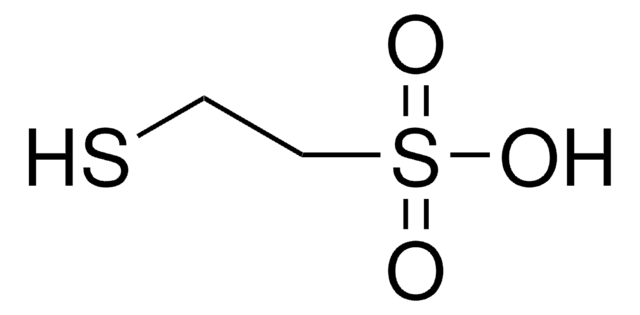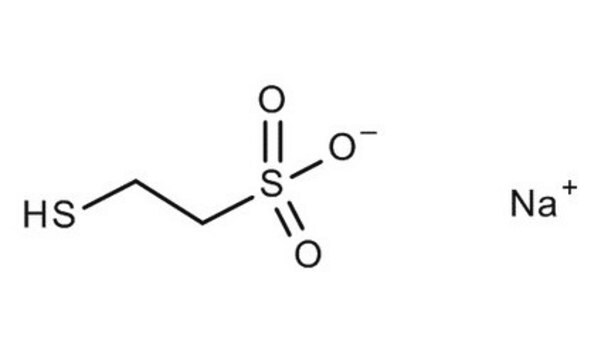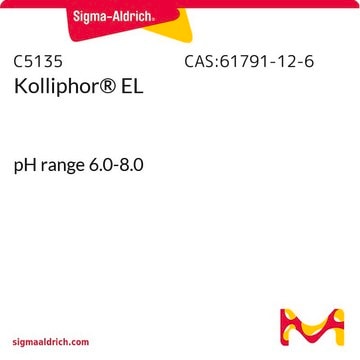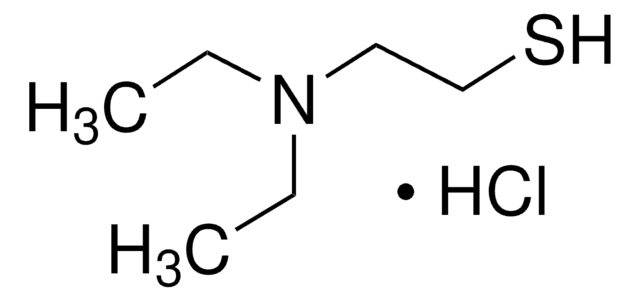63705
Sodium 2-mercaptoethanesulfonate
BioXtra, ≥98.0% (RT)
Synonym(s):
2-Mercaptoethanesulfonic acid sodium salt, Coenzyme M sodium salt, HS-CoM Na, MESNA
About This Item
Recommended Products
product line
BioXtra
Assay
≥98.0% (RT)
loss
≤2.0% loss on drying, 20 °C (HV)
cation traces
Ca: ≤150 mg/kg
Cd: ≤5 mg/kg
Co: ≤5 mg/kg
Cr: ≤5 mg/kg
Cu: ≤5 mg/kg
Fe: ≤5 mg/kg
K: ≤100 mg/kg
Mg: ≤5 mg/kg
Mn: ≤5 mg/kg
Ni: ≤5 mg/kg
Pb: ≤5 mg/kg
Zn: ≤5 mg/kg
SMILES string
[Na+].[O-]S(=O)(=O)CCS
InChI
1S/C2H6O3S2.Na/c3-7(4,5)2-1-6;/h6H,1-2H2,(H,3,4,5);/q;+1/p-1
InChI key
XOGTZOOQQBDUSI-UHFFFAOYSA-M
Looking for similar products? Visit Product Comparison Guide
Related Categories
Application
Other Notes
Signal Word
Warning
Hazard Statements
Precautionary Statements
Hazard Classifications
Eye Irrit. 2 - Skin Irrit. 2 - STOT SE 3
Target Organs
Respiratory system
Storage Class Code
11 - Combustible Solids
WGK
WGK 2
Flash Point(F)
Not applicable
Flash Point(C)
Not applicable
Personal Protective Equipment
Choose from one of the most recent versions:
Already Own This Product?
Find documentation for the products that you have recently purchased in the Document Library.
Customers Also Viewed
Our team of scientists has experience in all areas of research including Life Science, Material Science, Chemical Synthesis, Chromatography, Analytical and many others.
Contact Technical Service














